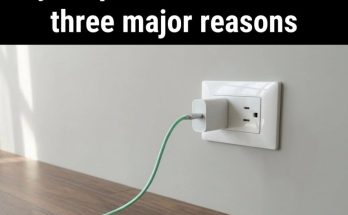A “radioactive man” suffered one of the most painful deaths in history, with his family insisting he be kept alive in pain.
On September 30, 1999, a tragic nuclear accident at the Tokaimura Nuclear Power Plant left Hisashi Ouchi with severe radiation exposure, marking one of the most painful deaths in recorded history.
Ouchi and his colleagues, Masato Shinohara and Yutaka Yokokawa, were instructed to mix uranyl nitrate in a large metal tank, despite reportedly having limited experience handling the hazardous material, per the Daily Mail.

This mistake led to an uncontrolled nuclear fission chain reaction, releasing dangerous radiation and gamma rays.
Ouchi, who was standing closest to the tank, received a staggering dose of 17,000 millisieverts (mSv) of radiation, far exceeding the exposure absorbed by his coworkers.
Shinohara and Yokokawa, stationed further from the tank, were exposed to 10,000 and 3,000 mSv respectively.
For Ouchi, this exposure marked the beginning of 83 harrowing days of suffering.
Following the incident, Ouchi fell unconscious and experienced immediate, severe symptoms: radiation burns, vomiting, and intense nausea.
He was quickly transferred to the University of Tokyo Hospital, where doctors discovered the extent of his injuries.
Hisashi Ouchi; The Man Who Suffered History’s Worst Radiation Burns With Doctors Keeping Him Alive For 83 Excruciating Days Against His Will.
A thread! pic.twitter.com/vTbixax1QZ
— Ãbdül (@datguyabdull) June 17, 2022
Ouchi had nearly no white blood cells left, compromising his immune system, and required extensive skin grafts and multiple blood transfusions.
As his condition deteriorated, Ouchi endured unrelenting pain.
His skin began to peel away, and his internal organs – particularly his liver and intestines – sustained extreme damage.
Despite medical interventions, his immune system could not recover.
During this time, he expressed profound distress to his medical team, reportedly crying out: “I can’t take it anymore! I am not a guinea pig.”
Despite Ouchi’s pleas, his family requested that doctors continue treatment.
On his 59th day of hospitalization, Ouchi suffered three heart attacks; however, his family insisted that he be resuscitated each time.
Ouchi ultimately succumbed to his injuries on December 21, 1999, at the age of 35, following multiple organ failure.

His colleague, Shinohara, also died of organ failure the following year at the age of 40. Yokokawa, however, survived after receiving three months of treatment for mild radiation sickness.
The accident’s aftermath saw Yokokawa and five JCO officials facing criminal negligence charges, to which all pled guilty in 2001.
JCO later paid $121 million in compensation for claims from 6,875 people and businesses affected by radiation exposure.
The company subsequently lost its credentials for operating nuclear facilities in Japan.


